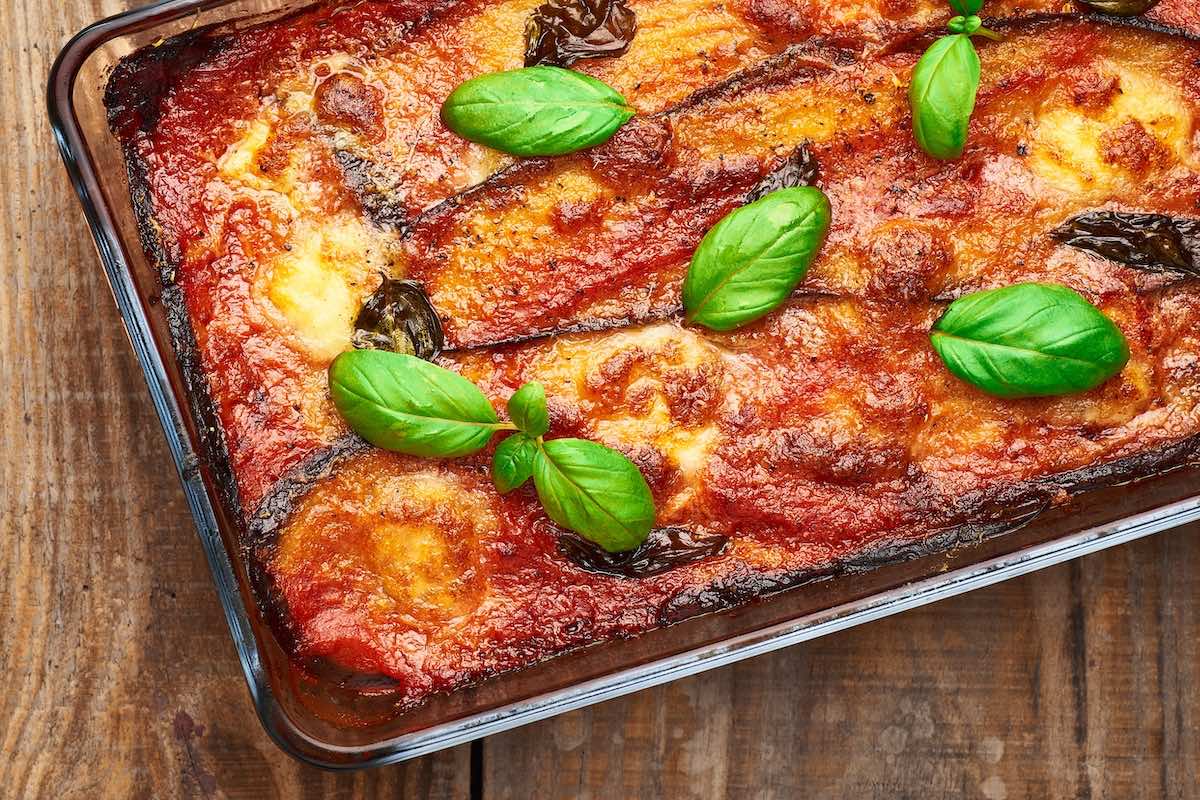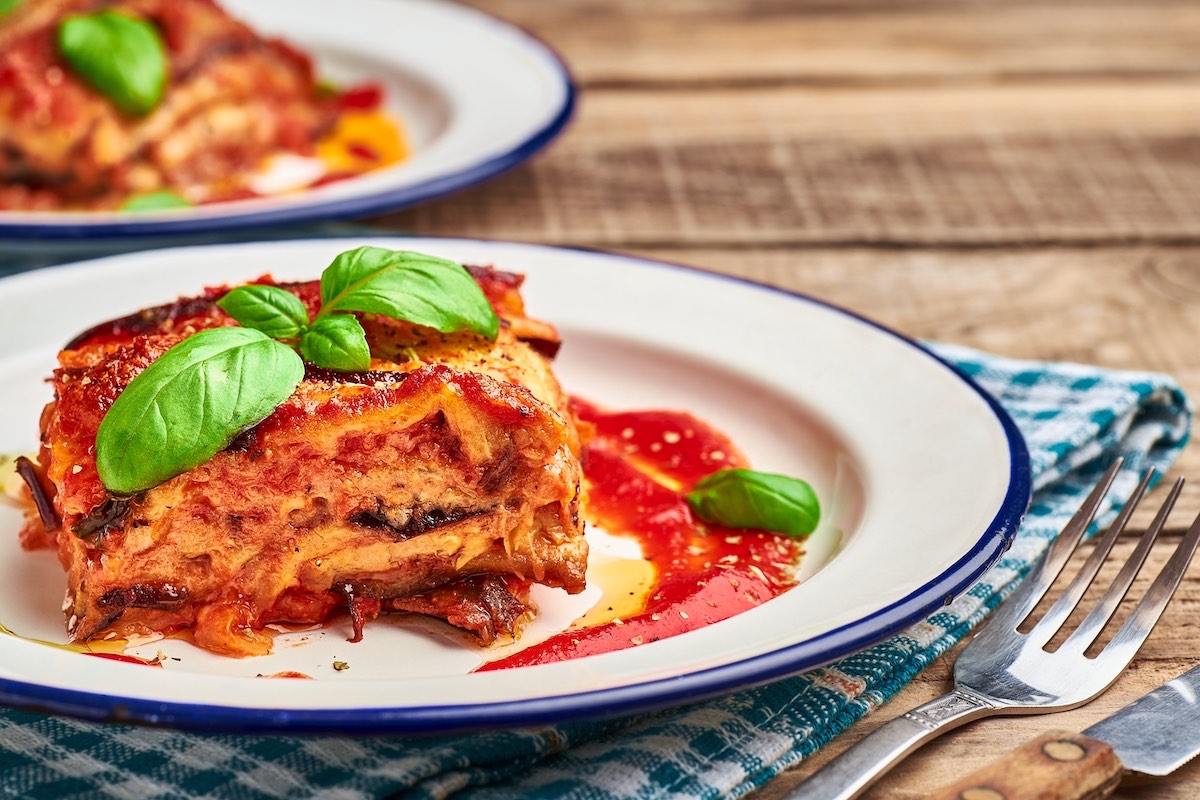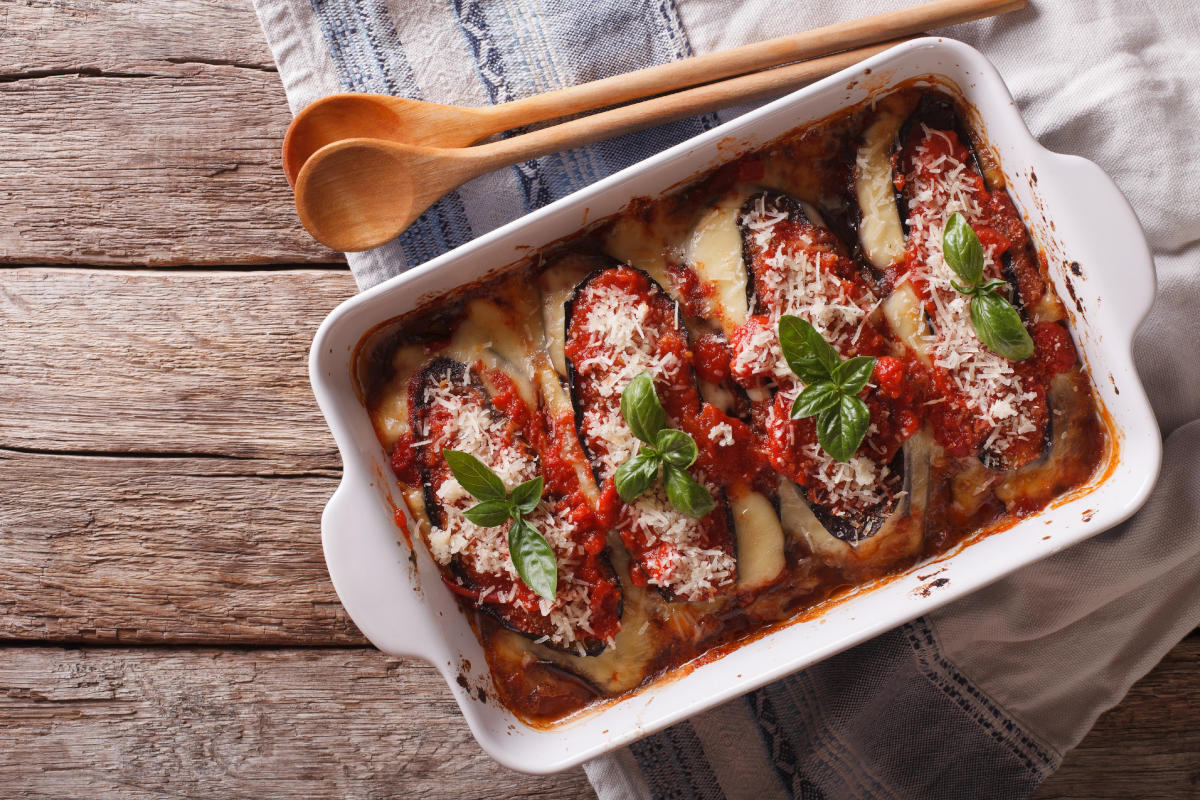Recipes
Neapolitan eggplant parmigiana


Eggplant dipped in flour and egg and then fried, San Marzano tomato sauce and fiordilatte from Agerola: here is the Neapolitan aubergine parmigiana.
How many versions of parmigiana are there? With aubergines, fried or grilled, with courgettes, with pumpkin and so on and so forth. Today we want to delve deeply into the history of this dish and discover what makes Neapolitan eggplant parmigiana different from any other recipe you have ever tried.
First of all, the ingredients make the difference: for a DOC Campania recipe, get San Marzano tomato puree and fiordilatte from Agerola . The aubergines should not simply be fried, but first dipped in the egg and then in the flour . Finally, don't forget to let it rest: only in this way will you be able to cut perfect portions!

How to prepare the Neapolitan aubergine parmigiana recipe
- First prepare the sauce . In a pan, heat the extra virgin olive oil with the garlic clove. Then add the tomato puree, a few basil leaves, salt and leave to cook. It will have to narrow so that all the flavors are concentrated.
- In the meantime, focus on the aubergines . Wash them, remove the top and cut them into slices lengthwise, 1 cm thick.
- Place them in a colander alternating them with a little coarse salt, cover with a weight and leave to drain for at least 30 minutes . Rinse them under running water and dry them with kitchen paper.
- Prepare two plates, a shallow one with the eggs beaten with a little salt and a flat one with the flour. Dip the aubergines first in the flour and then in the egg .
- In a pan, heat a drop of seed oil and fry the aubergines on both sides until they are golden. Drain them and pass them on absorbent paper.
- When both the sauce and the aubergines are ready you can assemble the dish. Spread a layer of sauce on the bottom of a baking dish for 4 people . Cover with the aubergines, then more sauce, parmesan and diced fiordilatte. Continue forming at least 3 layers of aubergines and complete only with tomato and parmesan.
- Cook at 200°C for 20 minutes then let cool before cutting. Only in this way will you obtain beautiful, precise slices.
The difference between Neapolitan and Sicilian aubergine parmigiana is that in the former the aubergines are dipped in flour and egg before being fried, while in the Sicilian version they are fried naturally. Another point of departure is in the cheese used: fior di latte in the Campania variant, caciocavallo in the Sicilian one. Try them both before deciding which is your favorite!
Here is a short video showing all the steps of the recipe. As you can see it is not very elaborate but the result is mouth-watering!
Conservation
Eggplant parmigiana is one of those dishes that is even better the next day . You can therefore prepare it in advance and serve it at room temperature or slightly heated. It can also be frozen , already portioned, for up to 6 months.
Neapolitan parmigiana: the ingredients
It's really worth saying a few words about the ingredients that make up the dish. In fact, you can follow all the steps perfectly but the taste, although excellent, will never be like the original without them.
The San Marzano tomato is a variety recognized with the DOP mark. Elongated in shape, with few seeds and fleshy pulp, it is the ideal variety for making tomato sauces, peeled tomatoes and preserves. According to some, San Marzano seeds arrived in the area around 1700 as a gift from the Viceroy of Peru to the King of Naples . What not everyone knows is that the current cultivated tomato variety is no longer the "original" destroyed by a virus and canceled from the lists in 1991. It is instead the result of the work to recover the genetic heritage financed by the Campania Region which allowed to obtain the Kiros and San Marzano 2 cultivars .
Agerola fior di latte is another typical product of the Campania region. It differs from the classic fior di latte due to its slightly acidic flavour , obtained thanks to 12 hours of natural acidification. The shape can vary from the classic rounded one to the one with a head or braided one. It is widely used in many typical Neapolitan recipes including parmigiana.
Origin and history
There are three regions competing for the paternity of aubergine parmigiana (and don't call them aubergine parmigiana, that's wrong!). Sicily, Campania and Emilia Romagna claim the dish, aware of the importance it has in the country's gastronomic culture.
It must be said that it is difficult to establish its origin. Eggplants arrived in Sicily at the hands of the Arabs in the 15th century, first passing through Spain. They share with tomatoes and potatoes the initial reticence of the population who considered them harmful and capable of driving madness.
The first to talk about parmigiana in 1733 was Vincenzo Corrado in Cuoco Galante . Here, however, the main ingredient is courgettes and not aubergines. We have to wait another 100 years to see the recipe as we know it (almost). It is 1839 and Ippolito Cavalcanti in the Cusina casarinola co la lengua napolitana describes it like this: "and you will fry the aubergines and then you will arrange them in a pan layer by layer with the cheese, basil and stew broth or with tomato sauce and blankets you'll make them stew."
It must be said that they were not even able to agree on the origin of the name. Some trace it back to the Sicilian term parmiciana used to indicate the wooden slats of the shutters (due to the overlapping arrangement). Others trace it back to petronciana , the term with which the aubergines were indicated upon their arrival. It therefore seems worth setting aside the connection with Parmesan, an ingredient present in the recipe. In all cases the recipe has some common features with moussaka , widespread in the region between Greece and Turkey.
Riproduzione riservata © - WT












